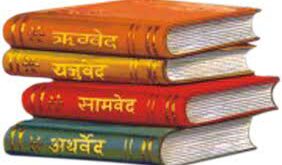
Ayurveda or Ayurveda medicine, is a system of medicine with historical roots in the Indian subcontinent.[2] Globalized and modernized practices derived from Ayurveda traditions are a type of complementary or alternative medicine. In the Western world, Ayurveda therapies and practices (which are manifold) have been integrated in general wellness applications and as well in some cases in medical use.
The main classical Ayurveda treatises begin with legendary accounts of the transmission of medical knowledge from the Gods to sages, and thence to human physicians. Thus, the Sushruta Samhita narrates how Dhanvantari, “greatest of the mighty celestial,” incarnated himself as Divodāsa, a mythical king of Varanasi, who then taught medicine to a group of wise physicians, including Sushruta himself . Ayurveda therapies have varied and evolved over more than two millennia. Therapies are typically based on complex herbal compounds, while treatises introduced mineral and metal substances (perhaps under the influence of early Indian alchemy or ). Ancient Ayurveda treatises also taught surgical techniques, including rhinoplasty, perineal lithotomy, the suturing of wounds, and the extraction of foreign objects.
Although laboratory experiments suggest it is possible that some substances in Ayurveda might be developed into effective treatments, there is no evidence that any are effective as currently proffered. Ayurveda medicine is considered pseudoscientific .Other researchers consider it aprotoscience, or trans-science system instead. Close to 21% of Ayurveda U.S. and Indian-manufactured patent medicines sold through the Internet were found to contain toxic levels of heavy metals, specifically lead,mercury, and arsenic. The public health implications of such metallic contaminants in India are unknown.
Some scholars assert that Ayurveda originated in prehistoric times, and that some of the concepts of Ayurveda have existed from the time of theIndus Valley Civilization or even earlier. Ayurveda developed significantly during the Vedic period and later some of the non-Vedic systems such as Buddhism and Jainism also developed medical concepts and practices that appear in the classical Ayurveda treatises . Humoral balance is emphasized, and the suppressing of natural urges is considered unhealthy and claimed to lead to illness. Ayurveda names three elemental substances, the doshas (called Vata, Pitta and Kapha), and states that a balance of the doshas results in health, while imbalance results in disease. Ayurveda has eight canonical components, which are derived from classical Sanskrit literature. Some of the oldest known Ayurvedic texts include the Suśrutha Saṃhitā and Charaka Saṃhitā, which are written in Sanskrit. Ayurveda practitioners had developed various medicinal preparations and surgical procedures by the medieval period.
[blog_post cat_slug=”ayurveda”] पौराणिक कथाओं, प्रेरक क्षण, मंदिरों, धर्मों, फिल्मों, हस्तियों के बारे में दिलचस्प जानकारी, हजारों गाने, भजन, आरती के बोल हैं Your wish may come true today…
पौराणिक कथाओं, प्रेरक क्षण, मंदिरों, धर्मों, फिल्मों, हस्तियों के बारे में दिलचस्प जानकारी, हजारों गाने, भजन, आरती के बोल हैं Your wish may come true today…



